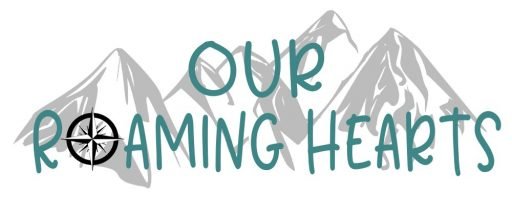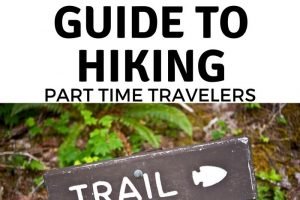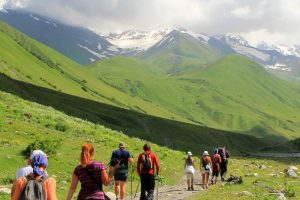When traveling, whether, with your family or solo, one of the best things to do is to get out there and go hiking. What else can you do that allows you to see the wonders to the world with a very low overhead cost? If you can hike back even just a half a mile to start, you can start to see a different world that is not visible from the road. Here is a beginner’s guide to hiking for full-time and part-time travelers.
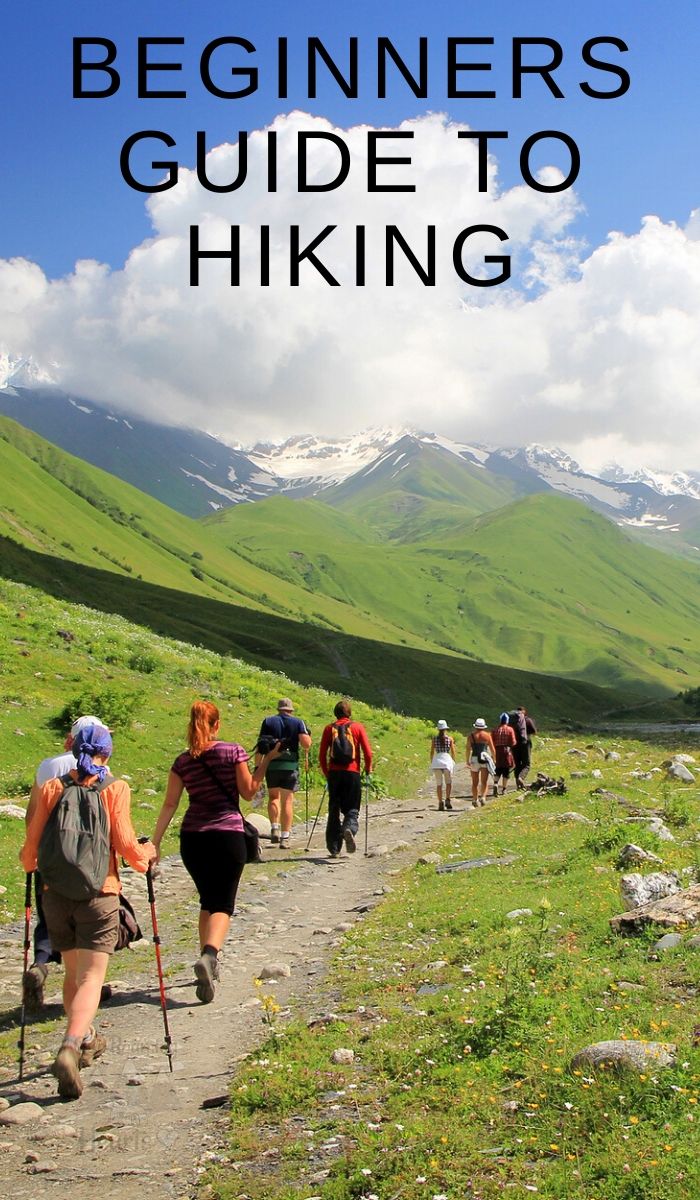
Beginners Guide to Hiking for Full-Time (and Part-Time) Travelers
Getting Hiking Ready
First things first, make sure you check out the What Should be in Your Hiking Pack post. That has the basics of what you should take with you when you head out on a hike.
Before you can start hiking though, you need to take a minute to think about what you are wearing. This is uber important because wearing the wrong gear in the wrong situations can have a very negative effect.
When going out for a short 1-2 mile hike over paved or trails, you can wear running trail shoes. For longer hikes over rough terrain, you need sturdier hiking boots.
For those hikes that occur in rain or snow, make sore your shoes are water-resistant. I personally wear compression socks when hiking long distances and wicking socks on shorter hikes. I tend to also wear a shirt that is water-resistant or have a rain jacket with me.
I bought these pants for hiking and I love them. I have them in several colors now. They are very comfy and stretchy and perfect multi-use pants!
Relayed: 11 Best Hikes in Grand Teton National Park
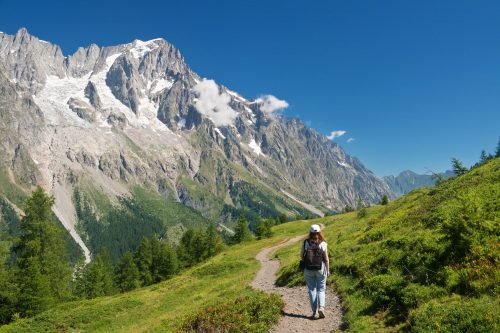
Know Your Limits
My friends in excellent shape can easily become winded on hikes that they aren’t used to. Start out on a beginner route and move up once you are familiar with your surroundings. Think of it like this… say you are used to hiking 1-2 hours over a few miles in the hot desert of Arizona.
Then you head to Denver or Alaska where it is a higher altitude, colder and the air has some humidity to it. Just those couple of things can affect your body adversely. Personal experience talking here.
Don’t ever be afraid to turn back if it gets to be too much. Better safe than sorry always.
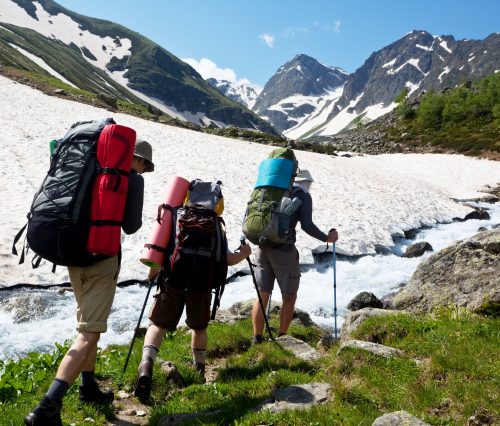
Check the Weather
Make sure to check the weather before you head out. If it’s going to be overly hot then you want to go at a cooler time fo the say, like early morning. If there is a going to be a huge thunderstorm it might be best to go another day.
Many hiking trails in the National and State Parks will close during certain weather or when it starts to snow you always check their websites too.
The weather can also affect how you dress. If it starts off cold and warms up you want layers. If it will be a colder day then you want to bundle up.
Also, remember if you are climbing in altitude in your hike that will change the weather so be prepared!
Related: A Walk Through Watkins Glen State Park New York – The Gorge Hike
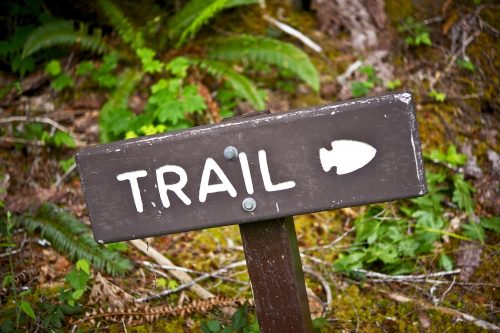
Always Stay on the Trail
It is very important that you always stay on the trail. Trails are generally marked well and at the very least you can follow the footpath from those before you.
If many National Parks it’s actually illegal to go off the trail due to the dangerous and damage you can cause. Also if you need help it’s easier to find out on the trail.
If you go missing rangers and first responders won’t know where you went off the trail and this could actually be why they don’t find you. I’m not trying to scare you out of hiking but I do want you to know the real dangers.
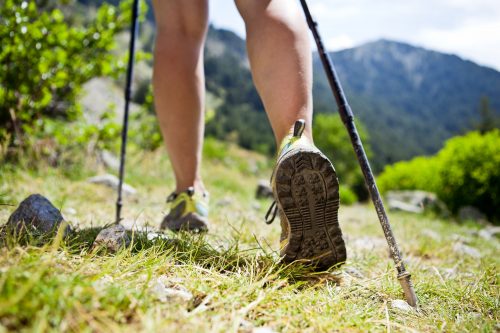
Download Google Map Offline
On the off chance, you get lost or the trail isn’t clearly marked you might need some help getting home. When you plan to hike open Google Maps up to that area and download the area you plan to hike on the offline part of your maps.
Since you will still be able to use the satellite location settings you can use the offline map to find your way home. Make sure your phone is charged and consider bringing a power bank just in case.
Related: Kids Hiking Journal
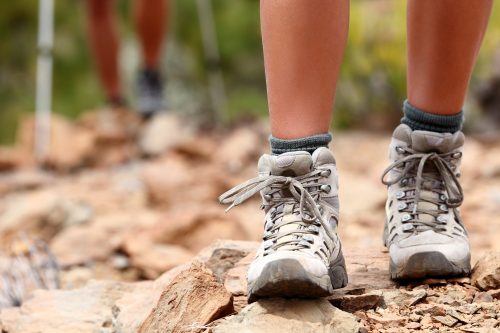
Start Easy
Trails get rated, based on their difficulty and length. When you are starting out you want to stick to the easy trails. These are generally flatter and only a few miles round trip.
As you get the hang of hiking nad your endurance gets better you can move on up to harder and longer trails.
Also don’t think just because the trail is short that it’s an easy trail. An example is a trail to Clingman’s Dome in the Great Smoky Mountain National park. The trail is less than half a mile and it’s a flat paved trail but the incline is so steep, and the altitude is so high it’s a very hard trail.
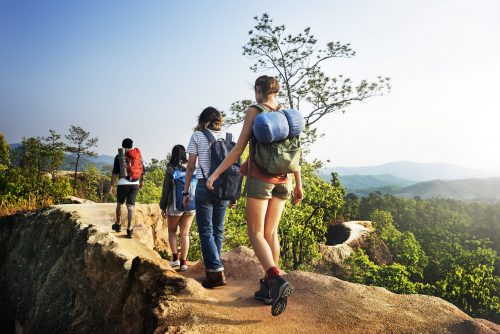
Know Your Trail
Make sure you do a bit of research on your trail before you hike. I like using All Trails for this. You want to know not only how the trail is but if you will be doing anything like climbing or having to walk through water on your hike.
Some hikes aren’t suited for children or for those scared of hikes. Some hikes take you on the edge of a climb with a steep downfall it’s always best to know what to expect on your hike.

Related: The Lost Art of Reading Nature’s Signs: Use Outdoor Clues to Find Your Way, Predict the Weather, Locate Water, Track Animals―and Other Forgotten Skills (Natural Navigation)
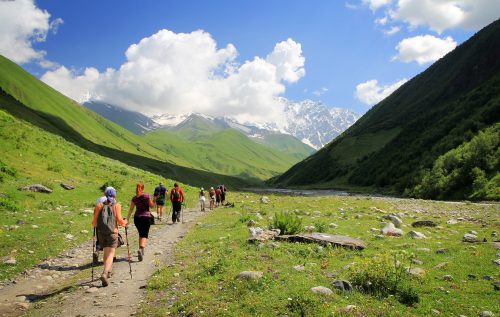
Stop Driving And Start Hiking Already
Most full-time travelers that are mobile are either in their RV or personal vehicle. Plan on doing at least an hour hike every day. This helps get you out of the driver’s seat and move those sore muscles. When you stay in one area for a week or so, go to the local visitor’s center for the region’s hiking map. Plan on checking out a different route daily.
I hope the beginner’s hiking guide helped motivate you to get out there! Some of the best things to see in the National Parks are on the trails! 
